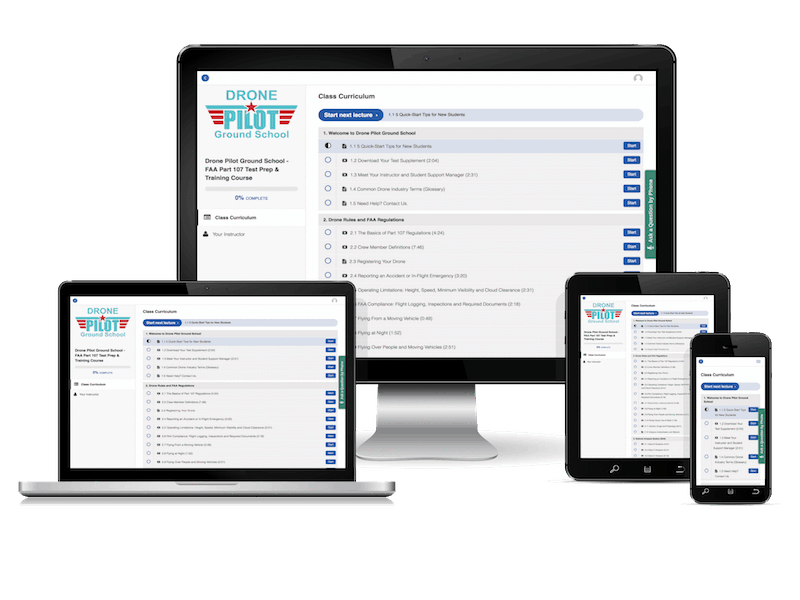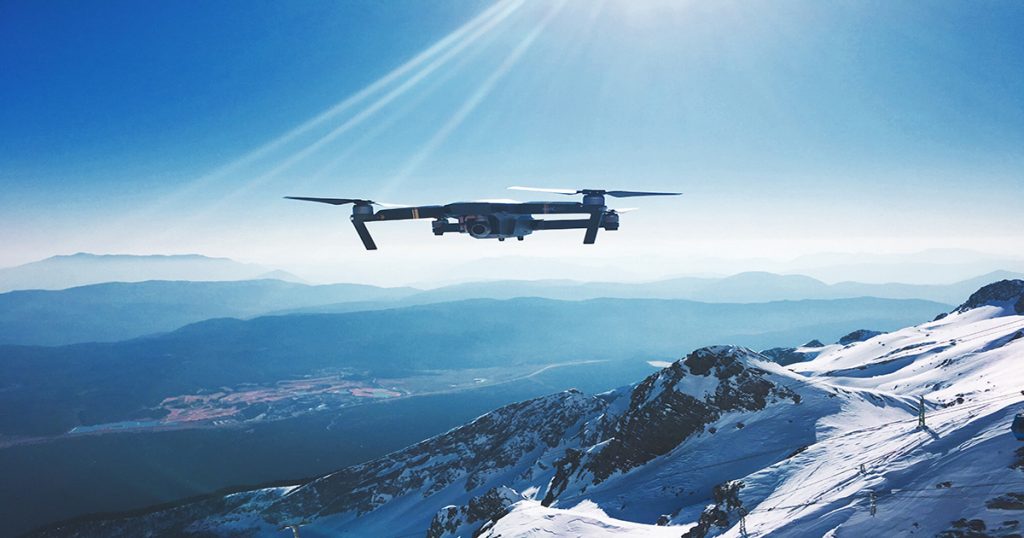Be Honest, Drone Pilots — Have You Made One of These 10 Common Mistakes?
BY Isabella Lee
7 November 2019Let’s be honest, drone pilots — most of us have made a few flying flubs we don’t care to admit to.

We all make mistakes, especially as beginners. An amateur pilot eager to fly their new drone straight from the box has a high chance of either crashing or unknowingly breaking the law.
Yikes.
But, there is good news. You can easily avoid common drone pilot mistakes if you know what to watch out for. We walk you through ten drone pilot mistakes that we see time and again, plus we’ll help you learn how to avoid making them yourself.
10 Common Drone Pilot Mistakes and How to Prevent Them
Here are the ten most common mistakes made by drone pilots and how you can prevent them.
Make note that every country regulates its airspace differently. The determination of what mistakes you should avoid as a drone pilot will be largely shaped by the drone laws in your country. While creating this list, we focused on the parameters of safe drone flight established by the U.S. aviation authority, the Federal Aviation Administration (FAA).
Mistake 1. Flying a drone without abiding by the legal requirement to register it
Do this instead: Register your drone with the FAA.
It is a common misconception that you do not need to register your drone unless you are flying for commercial purposes. That’s false. The only question you need to ask yourself in order to determine whether or not you need to register your drone is: does it weigh .55 lbs (250g) or more? If you answered yes, then follow these step-by-step instructions to register your drone with the FAA.
It’s also important to note that the FAA recently updated its drone marking requirement. Once you receive your FAA-issued registration number, you must display it on a visible, outside surface of your drone. Owners and operators may no longer place or write registration numbers in an interior compartment.
Mistake 2. Flying commercially when you aren’t certified
Do this instead: Earn your Remote Pilot Certificate.
So you want to make money flying a drone? Awesome! But first, you need to get certified. To fly your drone for work or business, you must obtain a Remote Pilot Certificate and abide by the FAA’s Part 107 rule.
To get a Remote Pilot Certificate, you have to pass the FAA’s Aeronautical Knowledge Test. To pass you’ll have to answer 60 questions within two hours and get at least 42 of those questions right. The test covers some pretty technical material, such as sectional charts and radio communications.
This test is tough, and not something to walk into without prior studying. We recommend checking out our test-prep course, Drone Pilot Ground School.

It’s an at-home Part 107 test-prep and commercial drone training course for those of you looking to become certified under Part 107.
Yes we’re biased because we built it, but we’re really proud of the training content and wholeheartedly believe we offer the best training product (and company support) of anyone else in the drone industry.
Here are some reviews from the 20,000+ students who’ve gone through our online course.
Mistake 3. Crashing a drone that you spent a lot of money on
Do this instead: Opt for an inexpensive drone when first starting out, and practice with a simulator.
We often suggest to beginners that they start off with a cheap drone to practice on as they develop their flight skills. For new drone pilots, crashing is bound to happen at some point or another. Managing the controls and mastering flight maneuvers takes practice.
If you invest in an expensive drone right off the bat, it will be a sore loss. It may be tempting to go right for the popular consumer drones with advanced cameras, like the DJI Mavic 2 Pro, that will put you out $1,700. However, there are plenty of cheap drones under $180 available on the market that won’t leave you feeling burned if you happen to crash it.

The Force1 U49WF is an excellent starter drone that costs under $150.
Another way to get in practice without putting your gear at risk is to use a simulator. A simulator provides a virtual flying experience on your computer or compatible device. You use a real drone controller connected to your computer or device to get a feel for the sticks before taking your drone out into the real world. Check out our guide on the Top Drone Flight Simulators. Some even come in a free version or with a free trial.
Mistake 4. Not checking if it’s okay to fly
Do this instead: Conduct airspace research and use a free app to check the airspace.
Conducting airspace research ahead of time will help you determine if it’s okay to fly in your chosen location. During this process, you might find out that you’ve chosen a location where a restriction is in place or where special permission is required to fly.
Check out this free lesson from Drone Pilot Ground School on how to conduct airspace research. In under 15 minutes, this lesson will teach you how to analyze an upcoming flight mission, look at the Sectional Chart, interpret the regulations, and think through your intended flight operations and how to best mitigate risk.
You can get up-to-date airspace information, including temporary flight restrictions, using free apps like Aloft, Autopylot, or B4UFLY.
Mistake 5. Flying in controlled airspace or near airports without permission
Do this instead: Use LAANC to request airspace approval.
Recreational and commercial flyers can use the automated Low Altitude Authorization and Notification Capability (LAANC) system to request airspace authorization to fly in controlled airspace around airports. If you’re operating in Class B, C, D, or E controlled airspace, you’ll need to request airspace authorization. You may do this through LAANC or through FAADroneZone in areas where LAANC is not available.

Mistake 6. Being unaware of local drone regulations
Do this instead: Research local drone regulations.
You might already be aware of the basic drone rules put in place by the FAA.
But, local and state governments have been adding their own regulations to the mix as well. Even though the FAA holds the exclusive authority to regulate aviation safety and the navigable airspace, local and state governments continue to issue new rules for drone operators.
If any local rules exist, you can commonly find them in the city’s code of ordinances, municipal code, or in the rules set by the state’s department of parks and recreation. Another helpful resource for researching local drone laws is our Drone Laws Guide, which outlines the state and local drone regulations we’ve been able to find.
Mistake 7. Improper battery care that leads to a hazardous situation
Do this instead: Follow proper battery care practices.
Improper battery care can have many negative consequences on your ability to fly and the safety of those nearby. Failure to take care of your batteries can shorten your flight time, decrease the lifespan of the battery itself, or even cause an explosion while being charged or stored improperly.
Most quadcopters use lithium-polymer, or LiPo, batteries. Here are a few things to keep in mind when it comes to LiPo battery care:
- Once the battery reaches a full charge, disconnect it from the charger. Overcharging LiPo batteries can be hazardous and even lead to the battery catching on fire.
- Never charge a battery that is still warm from usage, and never use a battery that is still warm from charging.
- Make sure to disconnect the batteries when you’re not using them, and store them in a fireproof container.
- Always store your LiPo batteries in a cool, dry place. Shoot for room temperature. Do not store them in a hot garage or in a refrigerator.
- Don’t store loose batteries together. This could lead to the terminals touching, which might cause a short circuit.
Mistake 8. Flying at night or over people without a waiver
Do this instead: Understand the waiver process.
There are some types of drone ops that need a waiver, which can take up to 90 days to get approved. In the U.S., some examples of operations restricted without a waiver include flights beyond visual line of sight (BVLOS), flights over people, and flights over 400 feet above ground level. These require a Part 107 waiver from the FAA. See the process for obtaining a Part 107 waiver here.
Mistake 9. Not understanding how the return-to-home mode works
Do this instead: Know what triggers return-to-home on your specific drone model.
Other than take-off or landing issues, not understanding return-to-home (RTH) is the most common reason new drone pilots crash. It’s important to understand that not all drones utilize the same built-in RTH safety mode, but if you’re flying something like the DJI Mavic series or Phantom series, there are three ways that RTH is triggered:
1) low battery
2) loss of radio signal between the remote control and aircraft (which could happen if you fly behind a building, have out-of-date software, encounter magnetic interference, etc.)
3) manually, by pressing a button on the controller or in the DJI app
If you want to get more comfortable using RTH and other advanced flight modes, consider taking a hands-on drone flight training class. At UAV Coach, our flight instructors help students practice setting the RTH home point, the pre-determined RTH altitude, and then triggering RTH while flying. Also, as the drone is coming in for a landing, we ask our students to practice canceling the RTH sequence and to take over manual controls.

10. Lacking strong situational awareness
Do this instead: Observe your surroundings and complete a pre-flight checklist.
If you haven’t had a chance to scout out the location ahead of time or don’t really know the local environment that well, take a breath before you start flying. Look around. What are your take-off, landing, and emergency hover zones? Is there any potential for electromagnetic interference? Look for towers, wires, buildings, trees, or other obstructions. Look for pedestrians and/or animals and set up safety perimeter if needed. Discuss the flight mission with other crew members if present. Listen for helicopters, etc.
Addressing each of these questions helps you build a strong situational awareness. Additionally, you should also complete a pre-flight checklist, which will not only help you ensure your drone is working properly, but will also help you gain an understanding of the airspace your operating in and possible obstacles to look out for.
Have you made any of the mistakes on this list? What mishaps did you experience as a beginner? Share your stories in this thread on our community forum.



